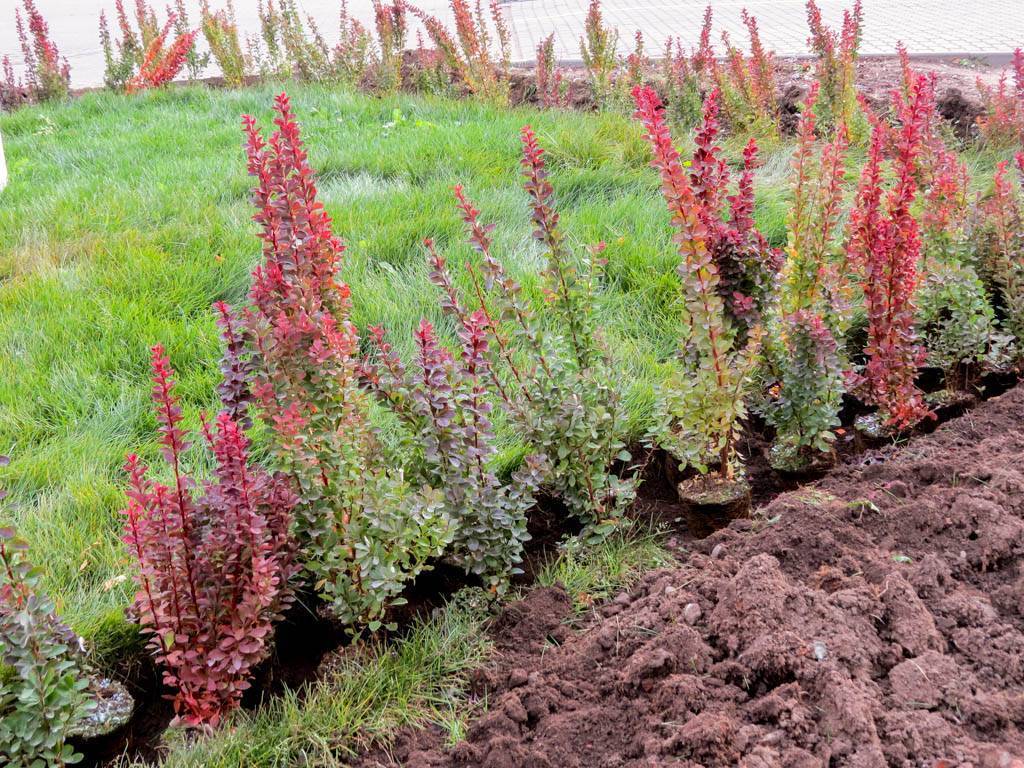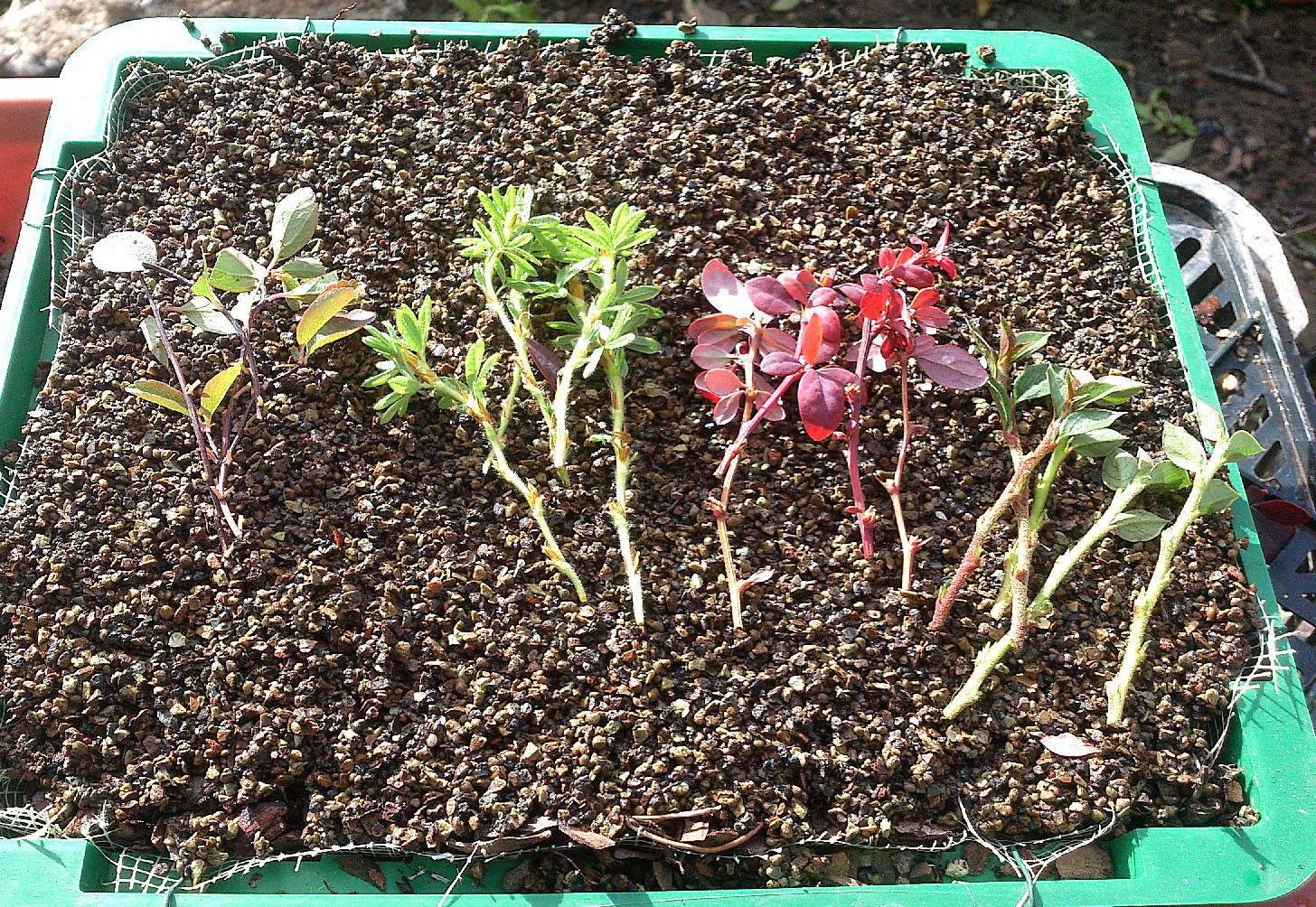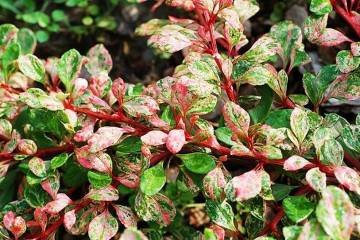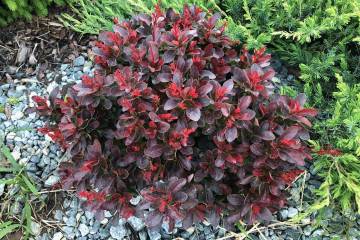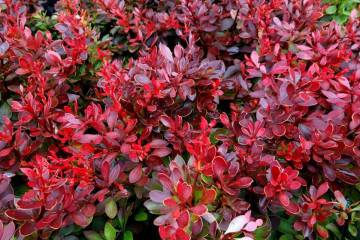Barberry Green Carpet - variety description and care
Content:
Barberry Green Carpet is a compact ornamental shrub. The culture is very easy to breed and care for, while decorating any site from early spring to late autumn. Everything is beautiful in it: abundant juicy foliage, bright red-yellow flowers, and red or pink fruits.
Description of barberry Green Carpet
Deciduous shrub of barberry of this variety is small in size. The spreading bush occupies about 1 m² of area and consists of a large number of brownish-yellow branches. The crown of the bush is somewhat flattened.
Comes into bloom from the beginning of summer. Flowers are collected in small inflorescences (7-9 pcs.). The buds are red on the outside and yellow in the middle. In early to mid-autumn, the fruits ripen. Small oval berries acquire a red or pink color by this time. The fruits stay on the branches all winter, even after the foliage is completely shed.
Planting a plant
Barberry (berberis) is unpretentious. It grows almost everywhere. But it reaches the greatest decorative effect in sunny areas, protected from strong winds.
Planting from seeds
It is not difficult to propagate barberry by seed. Only they should be ripe and fresh, so you should wait until the fruits are fully ripe. Next, you should collect them and take out the seeds. Before sowing, the seed is recommended to be disinfected in a pink solution of manganese.
It is best to sow them in the same autumn. For this, a nursery bed is being prepared. Seeds are sown along the groove to a depth of no more than 1 cm. For the winter, the bed must be covered (covered with dry foliage, peat, spruce branches). In winter, it will not be superfluous to sprinkle with snow.
Seedlings appear in early spring, and already at the end of April, the seedlings can be dived. They will remain on the temporary bed for two more seasons. Young plants can then be planted in permanent locations.
Seeds can also be sown in spring. To do this, they must undergo 2-3 months of stratification at low temperatures (in the refrigerator, cellar). Raw sand is used as a substrate.
Planting seedlings in open ground
The best time to plant a barberry seedling is mid-April.
For this, holes are prepared in advance. The culture is suitable for neutral soil, so acidic soil must be mixed with ash or lime. The bottom of the hole is lined with drainage (broken brick, pebbles, expanded clay).
The distance between seedlings should be at least 1 m (for hedges - 0.5 m).
Depending on the age of the seedling, the size of the hole can be 25 × 25 cm or 40 × 40 cm.
Saplings with straightened roots are placed in the center of the planting hole and sprinkled with soil mixture. After compaction of the root zone, the young plant is watered.
How to care for barberry Green Carpet
It is not difficult to look after the Green Carpet. For good development of the bush, regular watering, loosening, fertilizing and pruning is enough.
Watering
In the warm season, the shrub needs abundant regular watering. 25 liters of warm water once a week will be enough. Watering is recommended to be combined with weeding and loosening.
In the fall, watering is sharply reduced.
Top dressing
In the first year after planting, the culture does not need additional nutrition. Beginning in the second season, fertilize twice per growing season. The first top dressing is applied immediately after flowering, the second - in the fall. Potassium-phosphorus fertilizers will be optimal.
Nitrogen-containing additives are dangerous in autumn. They stimulate the emergence of new shoots, which may not have time to complete development before the cold weather.
Every three years, the barberry can be fed with urea.
Pruning
For culture, pruning is a must. During the growing season, it is carried out twice. In early summer, the bush is pruned for sanitary purposes. All damaged shoots are removed. All weak, growing inward shoots are also cut out. In the fall, a bush is formed. In this case, cardinal pruning of the entire crown is allowed. The branches are shortened by half or more.
A pruner or garden shears are suitable for decorating a bush. To protect against thorns, all work must be carried out with thick gloves.
Flowering period
The flowering period of barberry is short. It only lasts a couple of weeks. From the middle of June, the fruits are already being tied.
Yellow-red flowers are medium-sized, collected in loose inflorescences.
Reproduction methods
There are several breeding methods. All of them are available even to a beginner. To select the appropriate method, it is recommended that you familiarize yourself with them in more detail.
The first method is to obtain young seedlings from seeds. The fruits of barberry ripen well, so the seeds have almost 100% germination. After stratification, they can be sown before winter or spring. Crops dive at two or three true leaves. Then they grow up on a temporary bed for two years. Then the young plant is assigned to a permanent place.
The second way is grafting. Cuttings are cut in early summer. To stimulate root growth, the planting material is kept for some time in a stimulant solution (root, epin). Then the cuttings are planted in a nursery garden and watered regularly.
During the summer, young seedlings take root well. Before the cold weather, they take shape in young bushes. Two years later, young barberries are planted in a permanent place.
The third method is propagation by layering. For this purpose, the strongest lower stem is selected and pinned to the ground in several places. To speed up the process, you can slightly scratch the rooting site.
In the fall, a young plant is planted in the planned place.
The fourth way is to divide the bush. It is ideal for the Green Carpet. Good seedlings are obtained from 3-5 year old plants. Older specimens are difficult to remove without damage.
The process of obtaining new bushes looks like this:
- A bush with a clod of earth is dug up.
- The root system is divided into several parts with a hacksaw.
- Sections are processed with a solution of manganese (crushed coal, cinnamon powder).
- Delenki are planted in the selected places.
Diseases and pests
Of the pests, barberry is annoyed by:
- aphid;
- moth.
You can get rid of them with a soap or tobacco solution. Insecticides (fufanon, decis) are suitable from chemistry. The dosage is indicated in the description of the drug.
Barberry is often affected by powdery mildew, leaf spot, bacteriosis. Fungicides will help, but it is better to take preventive measures.
Preparing for winter
This variety of barberry is not at all afraid of the winter cold, but strong snowless frosts can harm the root system. Young plants are especially defenseless against them. In order to avoid freezing, it is better to insulate the bushes. You can simply cover them with spruce branches, mulch them high.
Use in landscape design
Landscape designers love to work with barberry in general and with the Green Carpet variety in particular. The bush is beautiful as a solitary figure, especially when combined with an even green lawn. Linear planting of barberry can be used to decorate garden paths, garden zoning, create a hedge. In the center of any flower garden, it will be a suitable backdrop for a huge number of flowers, herbs and other shrubs. Neighborhood with evergreen trees will highlight its changing beauty.
Healing properties
Barberry Green Carpet is not only a beautiful shrub, but also useful. Berries of this particular variety are not recommended for consumption, but the available useful trace elements allow them to be used for the preparation of medicines. Decoctions of leaves, berries can be used for external use for non-healing wounds, inflammations. They can also be used when:
- stomach ailments;
- nervous disorders;
- diabetes mellitus (as an adjuvant);
- varicose veins.
Barberry Thunberg Green Carpet is great for solving any design ideas. It is colorful at any time of the year. Unpretentious breeding makes it desirable for every amateur gardener.

